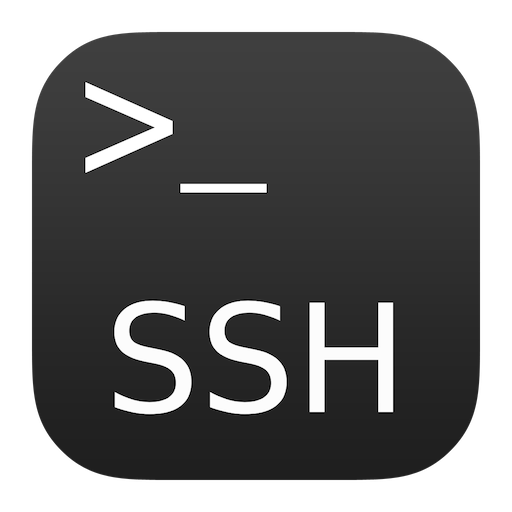Are you tired of dealing with complex SSH configurations on your Android device? Well, buckle up because we’re diving deep into the world of RemoteIoT platforms, SSH downloads, and everything in between. If you’re looking to simplify your remote access experience, this is the ultimate guide for you. Whether you’re a tech enthusiast or just someone trying to figure out how to securely connect to servers, RemoteIoT has got your back.
RemoteIoT isn’t just another platform; it’s a game-changer for anyone who wants seamless SSH access on their Android devices. In today’s fast-paced digital world, having the ability to manage servers remotely is more important than ever. From troubleshooting to monitoring, SSH gives you the power to handle everything from anywhere. But how do you get started? That’s what we’re here to explore.
In this guide, we’ll break down everything you need to know about RemoteIoT, SSH, and downloading the necessary tools for Android. We’ll cover the basics, advanced tips, and even some troubleshooting advice. So, whether you’re a beginner or an experienced user, there’s something here for everyone. Let’s get started!
Read also:Mastering Remoteiot Vpc Network With Raspberry Pi And Free Aws The Ultimate Guide
What is RemoteIoT Platform?
Let’s kick things off by understanding what RemoteIoT is all about. RemoteIoT is a cutting-edge platform designed to make remote server management a breeze. It allows users to connect to servers via SSH, FTP, and other protocols directly from their Android devices. Think of it as your personal remote control for servers, but way cooler.
Here’s why RemoteIoT stands out:
- Easy-to-use interface
- Support for multiple protocols
- Highly secure connections
- Compatible with Android devices
RemoteIoT isn’t just about convenience; it’s about giving you the tools you need to manage your servers efficiently. Whether you’re a small business owner or a tech professional, this platform can help you streamline your workflow.
Why Use SSH on Android?
SSH, or Secure Shell, is a protocol that allows you to securely connect to remote servers. But why would you want to use SSH on your Android device? The answer is simple: mobility. With SSH on Android, you can manage your servers from anywhere, at any time. No need to be tied to a desktop or laptop anymore.
Here are some benefits of using SSH on Android:
- Access servers on the go
- Secure connections with encryption
- Efficient command-line interface
- Cost-effective solution
Whether you’re traveling, working from home, or just relaxing on the couch, SSH on Android gives you the freedom to stay connected to your servers. And with RemoteIoT, the process is even simpler.
Read also:Andrew Aziz Net Worth The Untold Story Of A Rising Star
How to Download RemoteIoT for Android
Now that you know what RemoteIoT is and why SSH on Android is awesome, let’s talk about how to download the platform. The process is straightforward and can be done in just a few steps. Here’s how you can get started:
Step 1: Visit the official RemoteIoT website or app store. Make sure you’re downloading from a trusted source to avoid any security risks.
Step 2: Once you’ve found the app, click on the download button. The installation process should start automatically.
Step 3: After the download is complete, open the app and follow the setup instructions. You’ll need to configure your server details, such as IP address, port, and username.
That’s it! You’re now ready to start using RemoteIoT for SSH on your Android device. It’s that simple.
Tips for Configuring SSH on RemoteIoT
Configuring SSH on RemoteIoT might seem intimidating at first, but with the right tips, it’s a breeze. Here are some pointers to help you get started:
1. Set Up Strong Passwords
Security should always be your top priority when dealing with SSH. Make sure you use strong, unique passwords for your server connections. Avoid using common words or phrases, and consider using a password manager to keep track of them.
2. Enable Two-Factor Authentication
Two-factor authentication (2FA) adds an extra layer of security to your SSH connections. With 2FA, even if someone gets hold of your password, they won’t be able to access your server without the second factor.
3. Use Key-Based Authentication
Instead of relying on passwords, consider using key-based authentication. This method uses public and private keys to establish secure connections, making it much harder for unauthorized users to gain access.
By following these tips, you can ensure that your SSH connections on RemoteIoT are as secure as possible.
Common Issues and Troubleshooting
Even with the best tools, things can sometimes go wrong. Here are some common issues you might encounter when using RemoteIoT for SSH on Android, along with their solutions:
1. Connection Timeout
Problem: Your connection keeps timing out.
Solution: Check your internet connection and make sure your server is online. Also, verify that the IP address and port number are correct.
2. Authentication Failed
Problem: You keep getting an authentication error.
Solution: Double-check your username and password. If you’re using key-based authentication, ensure that your private key is properly configured.
3. App Crashes
Problem: The app keeps crashing.
Solution: Try updating the app to the latest version. If the issue persists, consider reinstalling the app or contacting customer support.
These troubleshooting tips should help you resolve most issues you encounter while using RemoteIoT for SSH on Android.
Advanced Features of RemoteIoT
Once you’ve mastered the basics, it’s time to explore some of the advanced features that RemoteIoT has to offer. These features can take your remote server management to the next level:
1. Multi-Server Management
With RemoteIoT, you can manage multiple servers from a single interface. This is perfect for businesses that have several servers to keep track of.
2. Script Automation
Automate repetitive tasks by creating custom scripts. Whether it’s backing up files or running updates, scripts can save you a ton of time.
3. Real-Time Monitoring
Stay on top of your server’s performance with real-time monitoring. You’ll get instant notifications if anything goes wrong, allowing you to take action quickly.
These advanced features make RemoteIoT a powerful tool for both beginners and experts alike.
Security Best Practices for SSH
Security is a critical aspect of using SSH, especially when managing servers remotely. Here are some best practices to keep your connections safe:
- Use strong passwords and enable 2FA
- Limit SSH access to specific IP addresses
- Regularly update your server software
- Monitor logs for suspicious activity
By following these best practices, you can minimize the risk of unauthorized access and ensure that your servers remain secure.
Future of RemoteIoT and SSH
The world of remote server management is constantly evolving, and RemoteIoT is at the forefront of this change. With advancements in technology and increasing demand for mobile solutions, the future looks bright for platforms like RemoteIoT.
Expect to see more features, improved security, and enhanced user experiences in the coming years. As more businesses embrace remote work, the need for tools like RemoteIoT will only grow.
Conclusion
In conclusion, RemoteIoT is a powerful platform that simplifies SSH connections on Android devices. Whether you’re a tech pro or just starting out, this guide has provided you with all the information you need to get started. From downloading the app to configuring SSH and troubleshooting common issues, we’ve covered it all.
So, what are you waiting for? Download RemoteIoT today and take your server management to the next level. Don’t forget to share this article with your friends and colleagues, and let us know what you think in the comments below. Happy connecting!
Table of Contents


